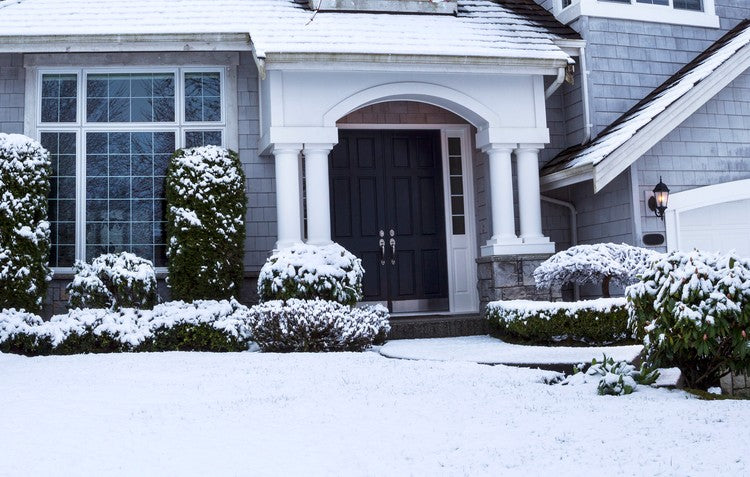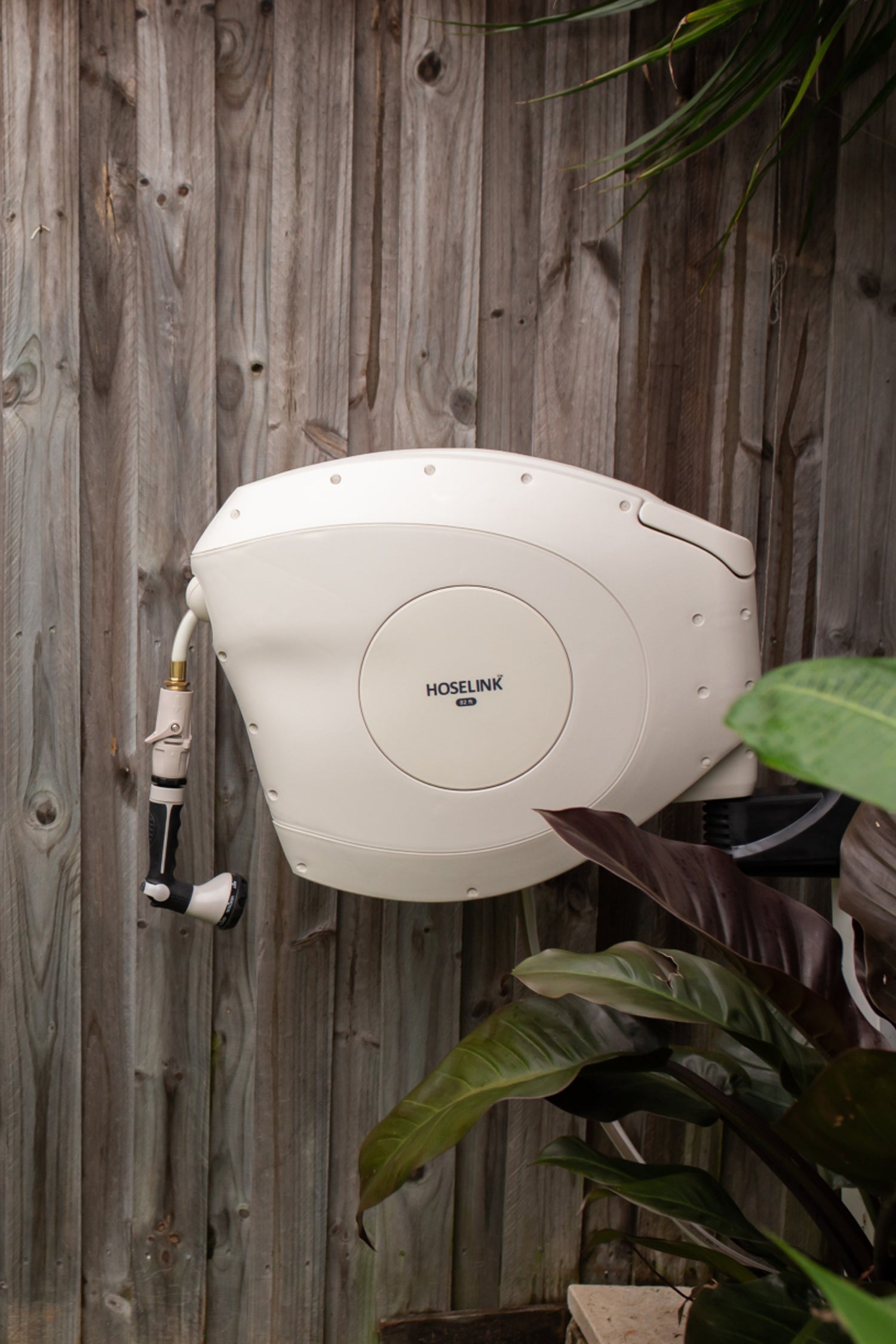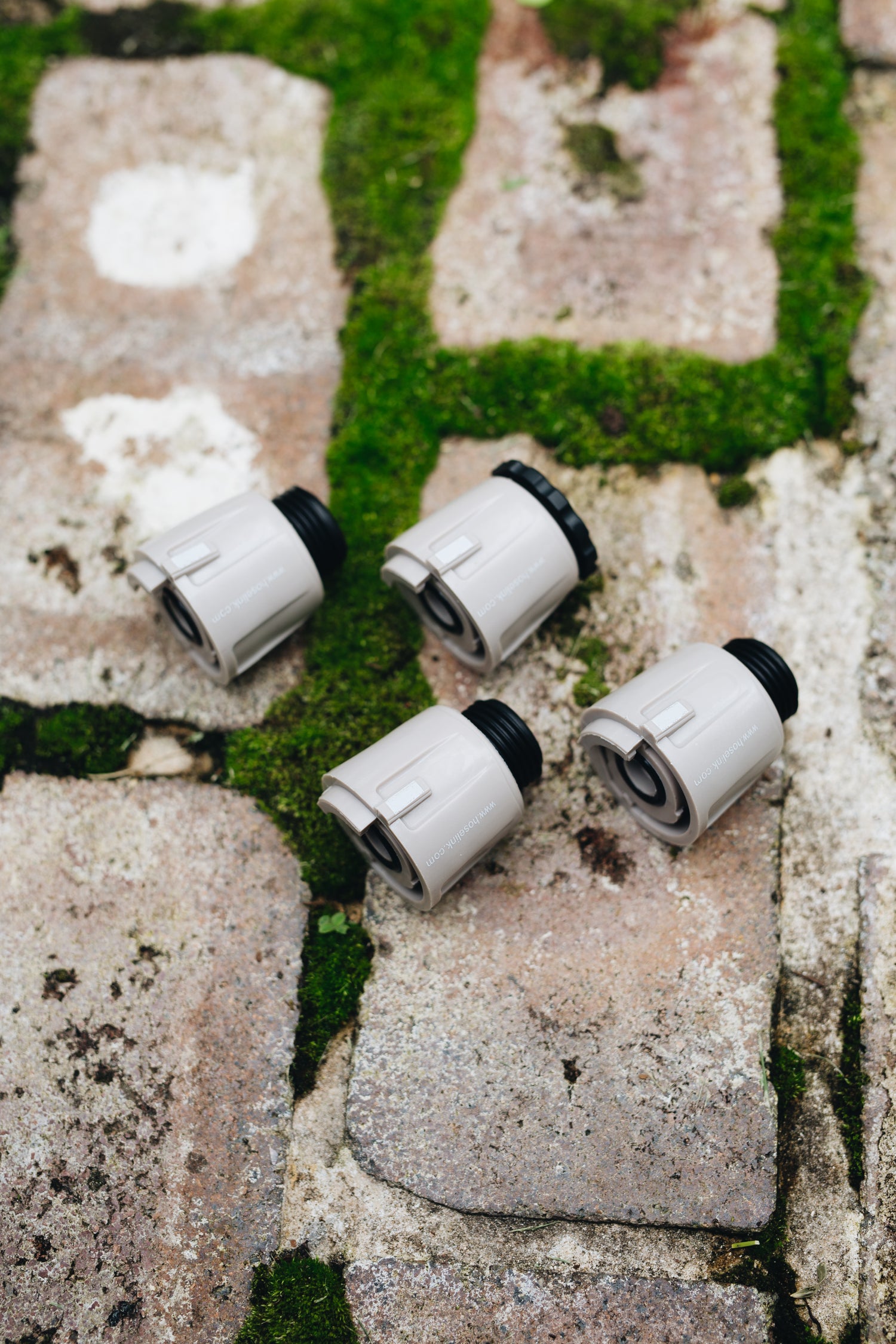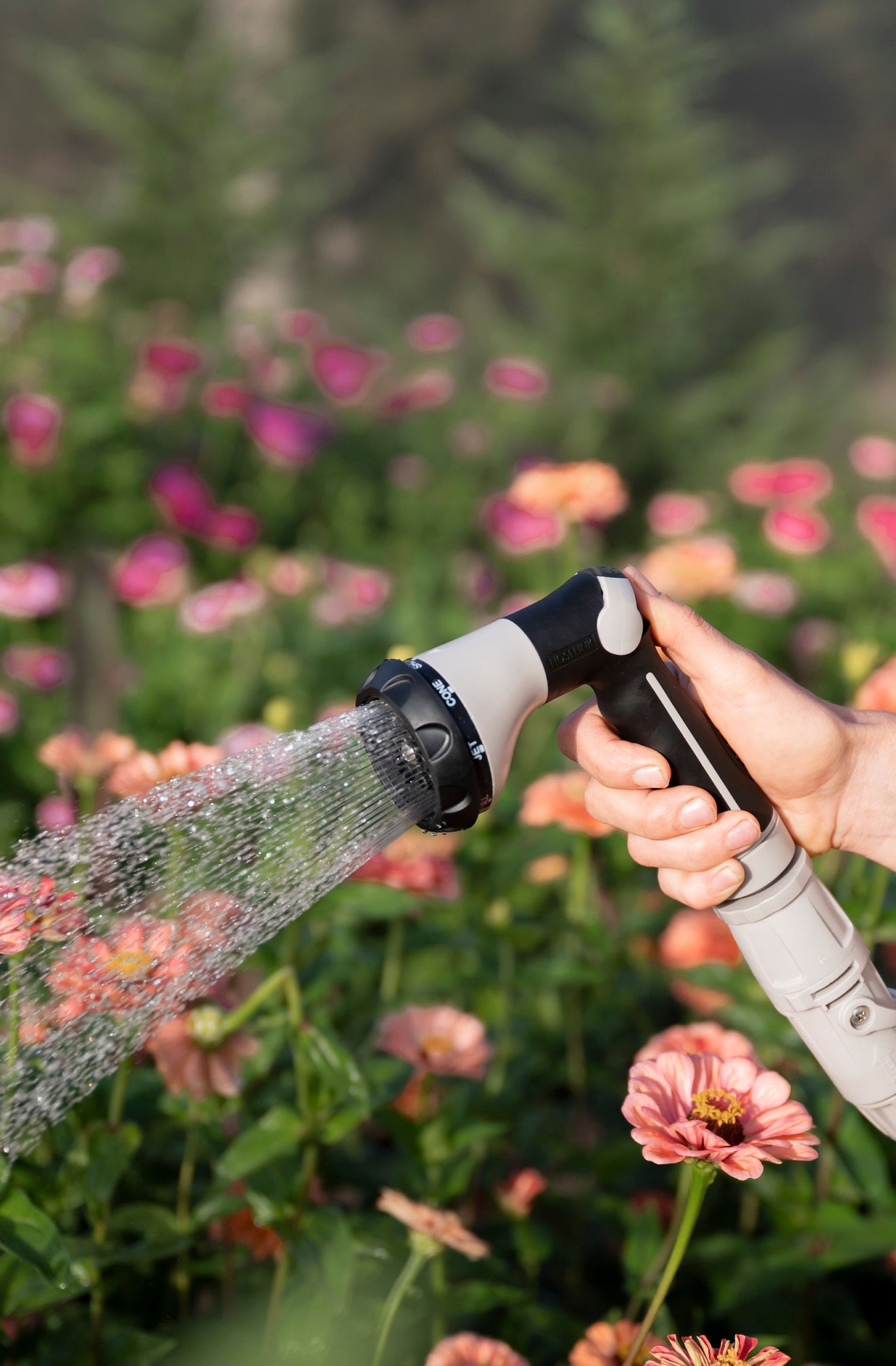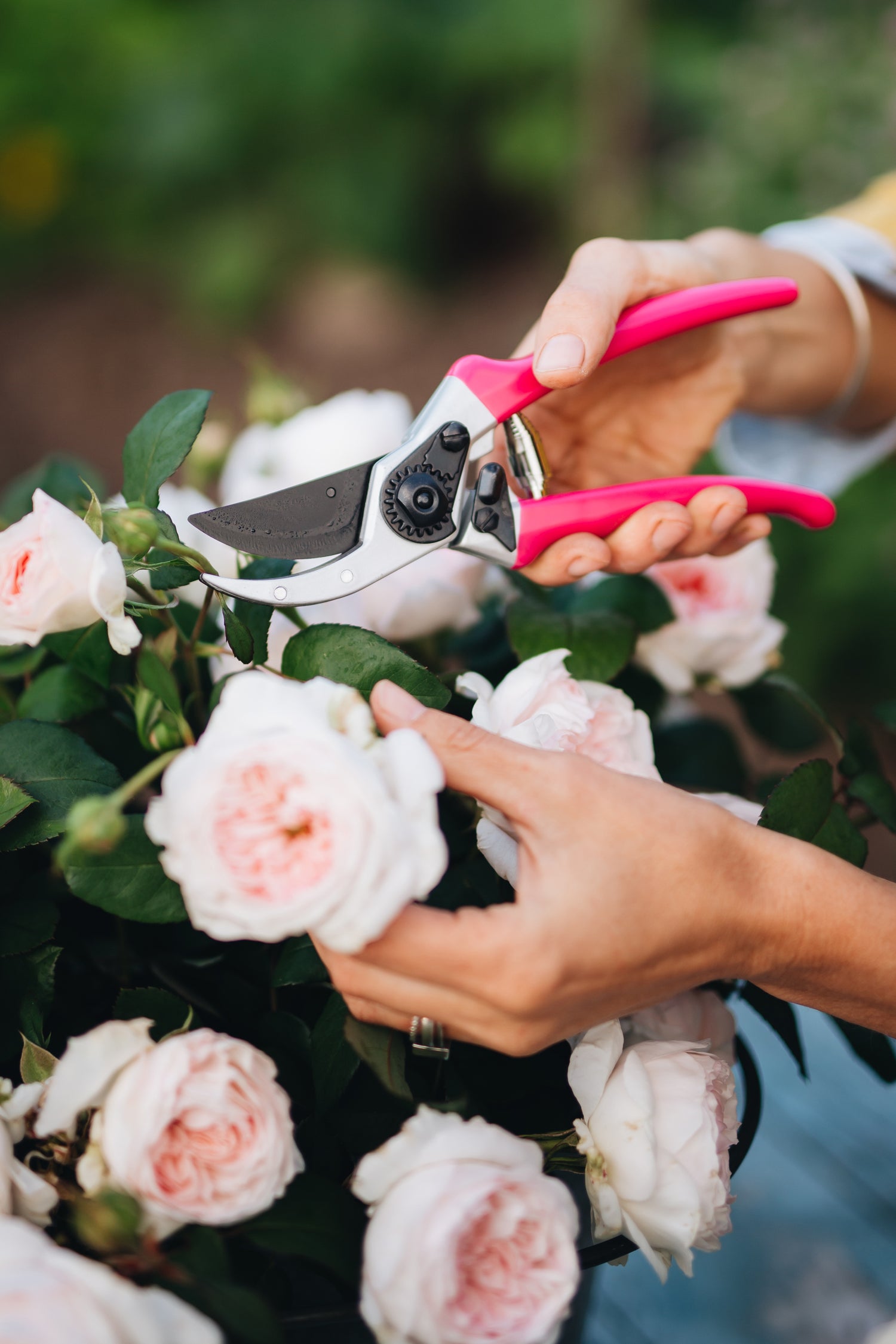Save this blog for a few weeks to get your lawn back and thriving!
It won't be too long before the sun is shining, birds are singing, trees and plants are leafing out, but your yard, although showing some shades of green, is mostly patchy brown. It doesn’t come as a huge surprise as winter, and its trusty workers snow, frost, and chilly air, seem to so easily beat up our luscious slices of backyard heaven.
With winter having passed it’s easy to place all the blame on colder weather, however there are other factors to consider, such as pests, disease, poor preparation, improper watering and feeding throughout these months, or even the wrong type of grass for the environment that you’re in. Of course, understanding exactly what’s caused your grass to die is the first and most important step in reviving a dead lawn, but what’s important to remember is that brown grass doesn’t always equal dead grass. “Temperatures are cool enough in spring for seeds to germinate, and performing the necessary upkeep before June will put your garden in good shape,” says The Lawn Whisperer, Justin Webb.
Read on to find out the steps you can take to revive your lawn after winter!
ASSESS YOUR GRASS
Once the winter’s snow and ice melt away, the first thing you’ll want to do is check whether your lawn has actually survived. Simply give a gentle tug to any parts of your lawn that seem questionable. “If you’re met with some resistance, it means the roots are hanging on and your grass is still alive,” says Webb.
The brown areas will need a little more time to resuscitate as those alternating winter freezes and thaws can make turf roots quite brittle, even if they are still breathing. Note that if you live on a street that’s been plowed, road salt can unfortunately kill grass too.
Grab a spade and use it to cut out the dead and discoloured areas of your lawn that lay loose, and gently rake up the debris.
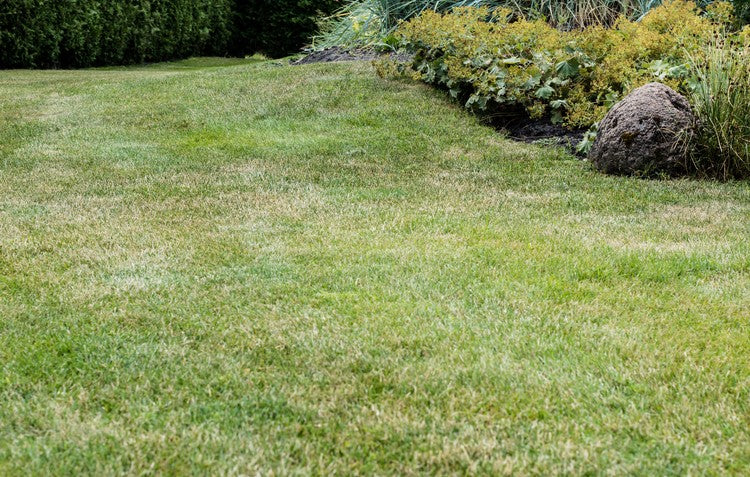
CLEAN UP DEBRIS
A happy, healthy lawn requires air, light, and water, but after winter you can almost guarantee that there will be a build-up of leaves and natural debris, known as thatch, that obstructs these elements and prevent your lawn from obtaining the nutrients it needs and puts a stranglehold on your lawn. In some cases, this type of build-up can lead to mold issues and dead grass, however it’s a simple fix!
To ensure that your lawn is flourishing right through the year and in the best position possible for growth post-winter, removing the leaves and debris through means of a yard clean-up will go a long way. Dethatching, also known as power raking, is the process of essentially combing your lawn to remove this compact layer.

REMOVING DE-ICING SALT
If you happen to live in an area that experiences snow, the grass that borders your nearby sidewalks and driveways may suffer damage from de-icing salt, a compound used to melt snow in urban areas. You can apply a thin layer of gypsum—a naturally occurring mineral that’s also used as a soil conditioner, to replenish the area with calcium and sulfur. Make sure to water thoroughly.

AERATE THE SOIL
Persistent snow, sleet and rain can really weigh down on your yard, the same way heavy foot traffic can. This makes it hard for your roots to get the vital nutrients they need to grow. If your lawn is waterlogged from winter’s harsh elements, you can aerate your soil, which allows for drainage and increases the oxygen and mineral levels within your soil.
When it comes to aerating, there are two different methods that you can use, spiking and pricking. Spiking involves creating holes using a garden fork, or similar tool, which is a great approach for small areas. When using the pricking method, you’ll need a rolling aerating tool, available at many hardware stores. Simply roll the tool along your lawn and each spike will pierce the soil with a hole that will loosen up the ground and allow oxygen in to help your lawn breathe.

FERTILIZE
Spring is the most critical time to give your lawn a health kick, as a harsh winter can seriously deplete your yard. If you find that your lawn is struggling, opt for a quick-release fertilizer that can travel straight to the roots and green up your yard in a few days. However, you’ll need to be cautious when using a quick-release fertilizer, as putting too much in one spot or area can destroy your grass.
Slow-release fertilizers that feed your lawn over time can also be used. These usually come in granules or pellets that sit atop your soil and dissolve over time, and although you’ll have to be patient to see results, this option will save you money and time applying in the long-term.
However, if your lawn is facing a life or death situation post-winter then we recommend a quick-release option for faster results.

OVERSEED
It's common for bare spots to appear after a long winter. These spots can create problems, not only with weed growth, but also in presenting your home to others and maintaining it for yourself. Give these spots extra water a few weeks after you seed them to encourage new grass roots to take hold.
Before you begin make sure to rake the area enough so that the soil is loose, not clumped. Proceed by sowing the seed at our recommended rate of 1.03 oz/yd2 by using a seed spreader or by hand.
After the seeds have been dispersed, rake the seed in after sowing so that the seed is in amongst the soil, press down by foot or by using a roller to improve seed to soil contact and water well afterwards!

REMOVE WEEDS EARLY
Whether we like it or not, weeds are destined to grow in our gardens. They compete with plants and grass for nutrients, and they can spread very quickly, often infesting the entire area.
Weeds can pop up for many reasons; they may not have been removed properly before, seeds from surrounding bushland may have been carried into your property, or simply because the grass on your lawn is not dense enough
To solve this problem, they must be removed! Hoselink’s handy Stand-Up Weed Puller is a fantastic tool that removes weeds at the root while saving you from bending or kneeling to hand weed. Your back will thank you!

EASE INTO MOWING
Although your lawn may have grown a little throughout the winter depending on your location, they generally need time to ease into spring. Avoid mowing your lawn on a low setting with temperatures rising, as short lawns can reveal the root system and create stressful situation for the grass. Webb recommends doing a light mow in early spring just to take off the ends of the blades. “This will ease your lawn back into the growing season and will help keep it looking green and full of life!”.


